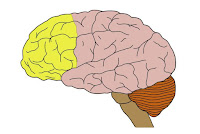Your child with High-Functioning Autism (HFA) or Asperger’s (AS) seems to have a multitude of behavioral and emotional issues. Which ones should you attempt to address first? With so many problems, where do you start?
A careful analysis of the most problematic symptoms is crucial, because the choice of interventions is influenced by symptom traits. Moreover, the wide array of symptoms results in the tendency of those closest to the HFA or AS youngster to lose sight, over time, of the intervention targets.
When parents (and teachers) turn their attention to a new troubling cluster of symptoms, an intervention that has been effective may be reinterpreted as ineffective. Being attentive to symptom traits allows the parent to measure effects and introduce helpful responses.
A careful analysis of the most problematic symptoms is crucial, because the choice of interventions is influenced by symptom traits. Moreover, the wide array of symptoms results in the tendency of those closest to the HFA or AS youngster to lose sight, over time, of the intervention targets.
When parents (and teachers) turn their attention to a new troubling cluster of symptoms, an intervention that has been effective may be reinterpreted as ineffective. Being attentive to symptom traits allows the parent to measure effects and introduce helpful responses.
==> Parenting System that Significantly Reduces Defiant Behavior in Teens High-Functioning Autism
The most important traits to consider include the following:
The most important traits to consider include the following:
- Distribution of the behavior problems
- Intensity of the behavior problems
- Onset: Time and Location of the behavior problems
- Duration of the behavior problems
- Ameliorating Factors for the behaviors
- Aggravating Factors for the behaviors
- Trends of the behavior problems: upward or downward
1. Distribution—
The distribution of behaviors is a term for the frequency of symptoms over time. It may be obvious, but it’s worth underscoring that for most kids on the autism spectrum, the frequency of symptoms changes within days, weeks, and months. Thus, having a good awareness of the course of a symptom is important for monitoring the behavior problem.
The early, short-term effects of a particular behavioral intervention may not be the most reliable ones for predicting the overall effect that intervention delivers. Frequency also is related to settings and circumstances. Aggression or perseverative behaviors often increase or appear under certain circumstances (e.g., when there are many people talking, or when there are crowds). As a result, for behaviors that are periodic, it’s useful to rate the behavior at the time when it’s most frequent or likely to surface, rather than a general rating throughout the day, week, or month.
==> Parenting System that Significantly Reduces Defiant Behavior in Teens High-Functioning Autism
2. Intensity—
Intensity is a measure of the energy the child uses when engaging in the behavior. It also can be helpful to base this rating on the ease with which the child may be redirected to another, different line of behavior.
3. Onset: Time and Location—
The onset of symptoms is often related to a time and a location. The parent’s ability to know when and where symptoms surface, or under what circumstances they surface, is helpful in rating progress. When symptoms are concentrated to specific times or places, parents should first consider behavioral or educational interventions carefully. It may be that greater direction for certain activities, a break from interaction, or modifying the expectations for the HFA or AS youngster in an activity, will go a long way toward reducing maladaptive behaviors.
If a symptom only occurs in one setting, then this may lead the parent to consider intensive behavioral interventions first. More generalized behaviors can lend themselves more to pharmacologic treatments, because it can be difficult to maintain uniform responses across many different settings for behavioral interventions.
4. Duration—
Duration is self-explanatory.
5. and 6. Ameliorating and aggravating and factors—
These can indicate what triggers a behavior or what sustains it.
2. Intensity—
Intensity is a measure of the energy the child uses when engaging in the behavior. It also can be helpful to base this rating on the ease with which the child may be redirected to another, different line of behavior.
3. Onset: Time and Location—
The onset of symptoms is often related to a time and a location. The parent’s ability to know when and where symptoms surface, or under what circumstances they surface, is helpful in rating progress. When symptoms are concentrated to specific times or places, parents should first consider behavioral or educational interventions carefully. It may be that greater direction for certain activities, a break from interaction, or modifying the expectations for the HFA or AS youngster in an activity, will go a long way toward reducing maladaptive behaviors.
If a symptom only occurs in one setting, then this may lead the parent to consider intensive behavioral interventions first. More generalized behaviors can lend themselves more to pharmacologic treatments, because it can be difficult to maintain uniform responses across many different settings for behavioral interventions.
4. Duration—
Duration is self-explanatory.
5. and 6. Ameliorating and aggravating and factors—
These can indicate what triggers a behavior or what sustains it.
==> Launching Adult Children with Asperger's and High-Functioning Autism: Guide for Parents Who Want to Promote Self-Reliance
7. Trends—
The reason to consider the trend of a behavior (i.e., whether it’s increasing or decreasing) is that an intervention that is introduced as a behavior is winding down may be wrongly considered as having helped. Often, parents seek treatment for their child when a behavior is peaking in severity. For periodic situations, by the time a therapist intervenes, the behavior may be cycling down by itself. Thus, it’s often helpful to wait before intervening in order to learn about the pattern of a behavior.
Obviously, this can’t be considered when the risks to safety or jeopardy to other aspects of the child’s wellbeing prevent the therapist from taking this time. If there is some doubt about whether symptoms may respond to behavioral treatment, or if one is unsure whether things have improved or remained the same, the therapist should wait.
Case in point—
A 10-year-old girl with autism (high-functioning) was brought to treatment for picking behaviors that had become a part of her bedtime routine. Each night, she would dig at her arms. After extensive efforts by the parents to learn about the pattern of her behavior, it appeared that it was influenced by the course of interactions at school during the day.
Although the child herself didn’t make the connection between being teased or having arguments with peers and her self-picking, it was possible to use relaxation techniques to reduce the intensity and duration of this behavior. In addition, the child’s mother and father were able to talk with her in the early evening about specific events from throughout the day that created angst before she went to bed. Overtime, the behaviors were significantly reduced (although they didn’t disappear altogether).
Highly Acclaimed Parenting Programs Offered by Online Parent Support, LLC:
==> How To Prevent Meltdowns and Tantrums In Children With High-Functioning Autism
==> Parenting System that Significantly Reduces Defiant Behavior in Teens High-Functioning Autism
==> Launching Adult Children with Asperger's and High-Functioning Autism: Guide for Parents Who Want to Promote Self-Reliance
==> Teaching Social Skills and Emotion Management to Children and Teens with High-Functioning Autism
==> Parenting Children and Teens with High-Functioning Autism: Comprehensive Handbook















.jpg)


